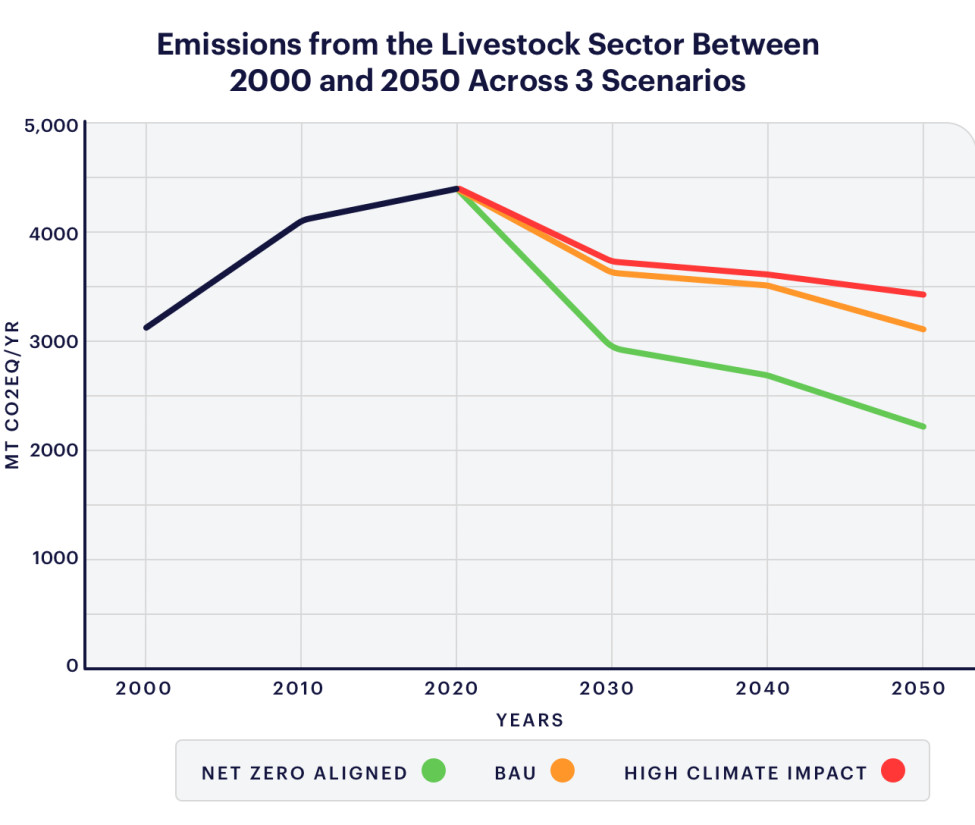Macro Drivers
FAIRR scenarios are aligned to the macroeconomic drivers used in the Shared Socioeconomic Pathways (SSPs) narratives. The SSPs are a range of possible future worlds along two axes: challenges to mitigation and challenges to adaptation. The economic land use models use future socioeconomic conditions to model the changes in demand for agricultural products, bioenergy, and investment in the agriculture sector. FAIRR scenarios use SSP1 - sustainable development, SSP 5 - fossil-fuelled development, and SSP 2 - middle-of-the-road development.
Population and GDP Growth
The socioeconomic trends in the High Climate Impact scenario are based on the SSP5 Fossil Fuel development pathway. By 2050, the global population will reach about 8.6 billion people and the GDP reaches 288 trillion USD. Half of the increase in population in 2050 will come from Africa, 17% from North America, 12% from the Middle East and 11% from Europe, and 8% from Asia. Improvements in the socioeconomic situation in the developing world leads people to adopt a Western diet high in fat and meat products.
In the Business as Usual scenario, the worlds population grows to 9.2 billion by 2050 and GDP reaches 187 trillion USD. Seventy-five percent, or 1.1 billion people, of the new population in 2050 will come from Africa or Asia (30% from Asia, 47% from Africa). In the BAU scenario, historical trends and dietary preferences continue to drive future demand for agricultural products.
In a Net Zero Aligned scenario, aligned with an SSP1 sustainability pathway, the population reaches 8.5 billion people by 2050 and a global GDP of around 226 trillion USD. Almost 60% of new people will come from Africa, while the Middle East is expected to grow by about 108 million. Asia and North America are expected to grow by only 88 million and 85 million people, respectively. The developed world moves toward healthier diets by reducing over-consumption. The developing world improves economically and increases food security without shifting toward livestock products.
Emissions from the Livestock Sector
Agricultural emissions considered include relevant GHG emissions from livestock production, including land-use change. The estimated agricultural sector emission trajectories in the model reflect different macro-economic (population, GDP growth and carbon prices), socio-economic (shift in dietary preferences), and agronomic (technological change) drivers. In addition to the demand for agricultural products, an important driver of emissions are the carbon prices that incentivise the adoption of emissions abatement technologies and the transition towards more emissions efficient production systems. As prices for emissions intensive commodities increase in response to the carbon price on GHG emissions, consumers decrease their consumption levels of emissions intensive commodities depending on their own-price elasticity of demand.
